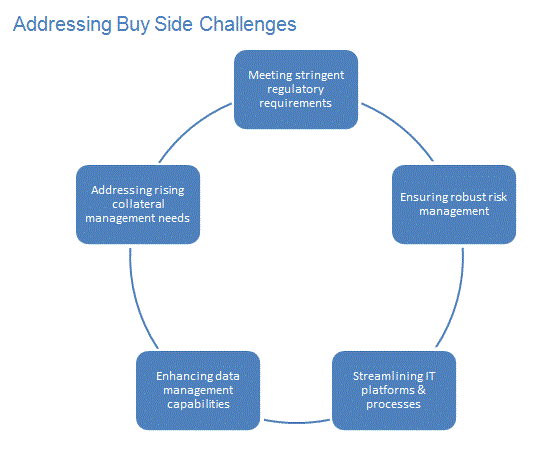Impact of Regulation on the Buy Side: Uphill Task for Smaller Firms
Abstract
The financial markets are undergoing an important transition. This has been precipitated partly by the global financial crisis and its aftermath, and partly by the resultant effort on the part of the regulators to ensure that such an occurrence is not repeated. Against this background, buy side firms are facing a great degree of pressure to reorganize and streamline their businesses in line with regulatory norms.

In the report Impact of Regulation on the Buy Side: Uphill Task for Smaller Firms, Celent looks at the impact of a rise in regulatory norms, especially in the context of small and medium buy side firms. Regulations such as the Dodd-Frank Act (DFA), Basel III, European Market Infrastructure Regulation (EMIR), Markets in Financial Instruments Directive (MiFID II), and Market Abuse Directive (MAD II) are placing an emphasis on improving trading and risk management technology to ensure higher levels of control and oversight, greater transparency, and more accountability.
With much higher liquidity on the cleared markets, bilateral trading is increasingly expensive and difficult to undertake, and buy side firms have to redefine their clearing strategy accordingly to maintain competitiveness. Similarly, pre-trade compliance has become a major area of concern for buy side firms as various regulations, for both exchange-traded and OTC derivatives, have put greater pressure on the front office, thereby requiring greater efforts and higher costs for compliance.

In some ways, small and medium-size buy side firms have felt the brunt of the recent regulatory onslaught, because they are less equipped to handle a rise in compliance requirements. Large asset managers and hedge funds are able to compete on a level playing field with their sell side counterparts, but the smaller asset managers do not have the wherewithal to do so. Nevertheless, many smaller buy side firms have been able to make the most of the rise in regulation and associated costs by creating a niche for themselves and sticking to their areas of expertise instead of trying to invest heavily in in-house capabilities to meet various requirements such as those of risk management, data analysis, and reporting and collateral management.
“Although the buy side has to cope with a plethora of new regulations, indications are that the increase in oversight will plateau, and associated changes and costs will also be tempered,” says Dr. Anshuman Jaswal, a senior analyst with Celent’s Securities & Investments practice and author of the report. “But there will remain a need for smaller buy side firms to increase automation and streamline their IT systems and processes.”

